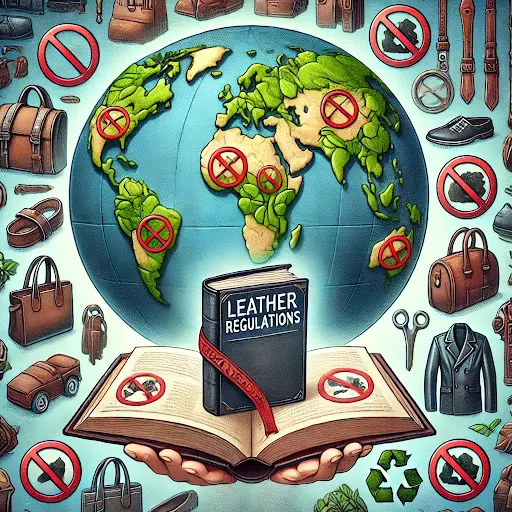The prohibition or restriction of certain types of leathers across the world is often influenced by environmental, ethical, or conservation concerns. Here are a few examples:
Exotic and Endangered Species: The use of leathers from exotic and endangered species, such as certain types of snakes, crocodiles, and turtles, is often restricted or prohibited to prevent the illegal wildlife trade and protect endangered species from exploitation.
CITES-Listed Species: The Convention on International Trade in Endangered Species of Wild Fauna and Flora (CITES) is an international agreement that regulates the trade of certain animal and plant species. Many exotic leathers fall under CITES regulations, and their trade is strictly controlled to ensure their conservation.
Ivory and Elephant Leather: Due to the alarming decline in elephant populations, the international trade in ivory and elephant leather is banned to combat poaching and protect these iconic animals from extinction.
Protected Marine Species: Leather from certain marine species, such as sea turtles, is prohibited in many countries to safeguard these animals from exploitation and support conservation efforts.
Domestic Animal Abuse Concerns: In some regions, there are regulations against the use of leather obtained from animals that have been subject to cruelty, abuse, or unethical treatment. This may include regulations aimed at preventing the use of leather from animals raised for their skins in inhumane conditions.
Environmental Regulations: Some types of leather production involve harmful environmental practices, such as the use of toxic chemicals in tanning. Regulations and restrictions aim to address these environmental concerns and promote more sustainable practices in the leather industry.
Ethical and Religious Considerations: In some cultures and religions, there are prohibitions or restrictions on the use of leather from specific animals due to ethical or religious beliefs.
It's important to note that regulations and prohibitions can vary from country to country, and international agreements play a crucial role in addressing issues related to the trade and use of certain types of leathers. Additionally, ongoing efforts are being made by governments, organizations, and consumers to promote sustainable and ethical practices within the leather industry.

